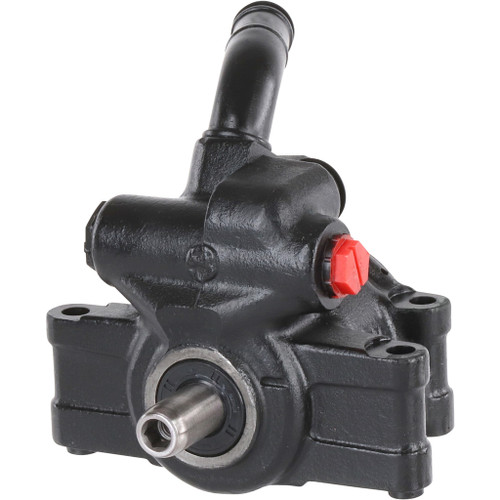 Remanufactured products only require 15-20% of the total energy and material it takes to manufacture
new parts while keeping usable cores out of landfills.
Remanufactured products only require 15-20% of the total energy and material it takes to manufacture
new parts while keeping usable cores out of landfills.
 CARDONE's skilled technicians and engineers can completely rebuild your part and return it to you,
good as new. Learn More.
CARDONE's skilled technicians and engineers can completely rebuild your part and return it to you,
good as new. Learn More.
Product Description
CARDONE Remanufactured Power Steering Pumps are engineered to meet or exceed O.E. performance. Original designs are scrutinized for potential improvement, and where applicable, design upgrades are implemented to produce a more durable part than the original. All critical components are tested to ensure proper function. Every unit undergoes a hydraulic efficiency test to ensure reliable, long-lasting performance.
Product & Technical
Core
What is a core? A core is a used automotive part that is returned to the remanufacturer instead of being scrapped. Why return cores? Cores are literally at the “core” of the remanufacturing process, because they are the raw material used to start the remanufacturing process. That’s why remanufacturers buy cores back from customers, and they pay the most for good quality cores. If a core has too much damage in key areas, it may be unusable or require extra resources to process; therefore a reduced core payment may be awarded. This core policy explains potential deductions that may be taken from the core price if certain components are missing or damaged. What is remanufacturing? Remanufacturing is the process of taking used parts, completely disassembling and thoroughly cleaning them, replacing the worn components with original quality components, and restoring them to their original function. Every unit is 100% tested to ensure O.E. performance. Why “reman”? PRODUCTS - Reman captures used, durable goods like auto parts and puts them “back on the road” to new and sometimes better than new performance. Reman provides the opportunity for detection of common failure modes and incorporation of design improvements to prevent repeat failure.ECONOMY - Reman products cost consumers about 40% less than new. Reman products are one of the few “green” products that actually costs less than their “non-green” counterparts.
ENVIRONMENTAL - Reman saves up to 86% of the energy required to build a new unit. Reman realizes Greenhouse Gas savings of up to 25 lbs. per unit over new. Reman saves up to 85% of the raw material required to produce a new unit by reusing existing products. Reman is even more sustainable than recycling, as product castings are preserved rather than melted down to raw material, saving energy and reducing emissions.














